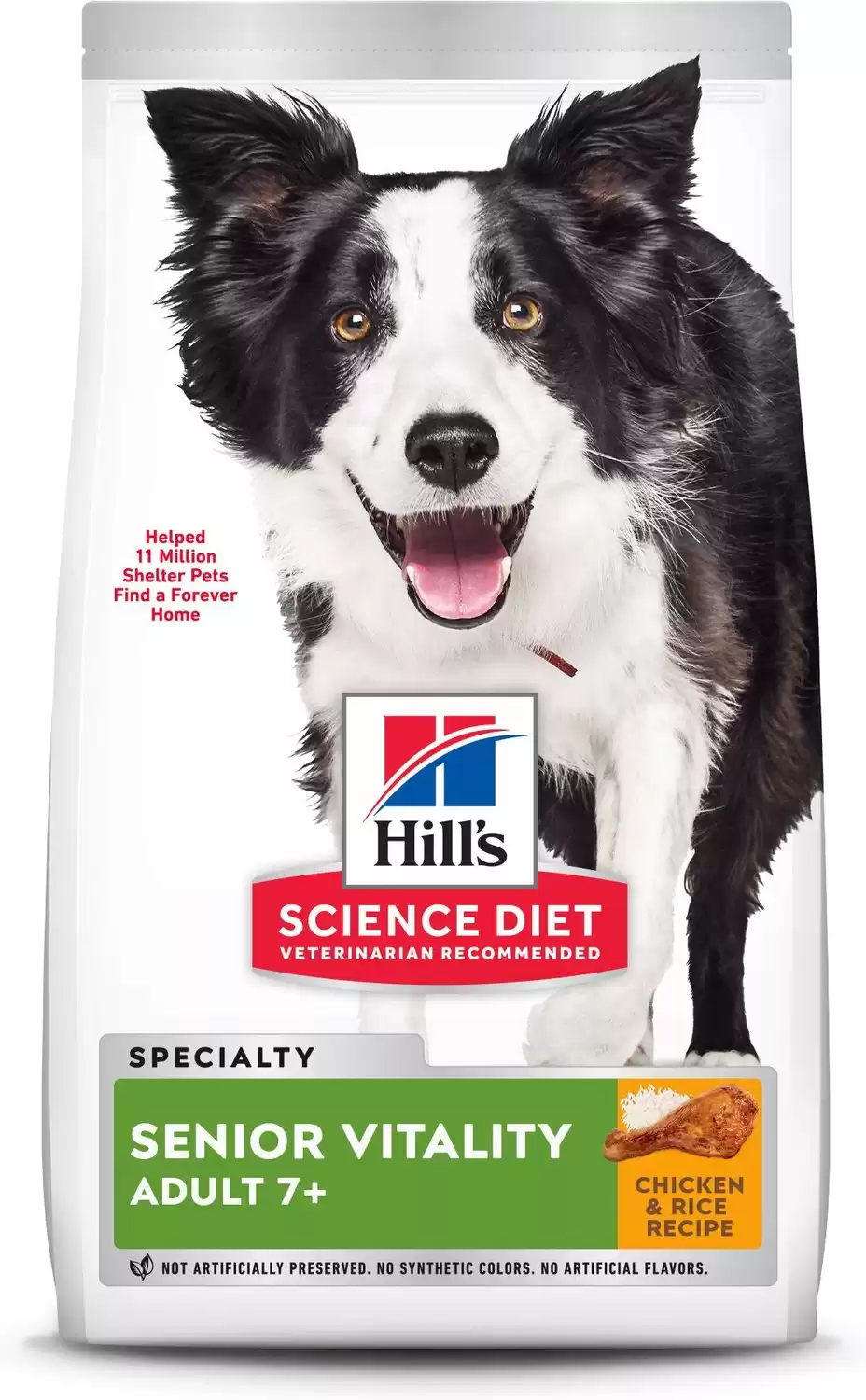Eskimo Dog
Canis Lupus
Takes pure delight in cold weather!
Advertisement
Eskimo Dog Scientific Classification
- Kingdom
- Animalia
- Phylum
- Chordata
- Class
- Mammalia
- Order
- Carnivora
- Family
- Canidae
- Genus
- Canis
- Scientific Name
- Canis Lupus
Read our Complete Guide to Classification of Animals.
Eskimo Dog Conservation Status
Eskimo Dog Facts
Eskimo Dog as a Pet:
- General Health
- Energy Level
- Shedability
- Trainability
- Intelligence
- Tendency to Chew
- Size
- Family and kid friendliness
- Yappiness / Barking
- High
- Separation Anxiety
- High
- Preferred Temperature
- Average climate
- Exercise Needs
- High
- Friendly With Other Dogs
- Moderate
- Pure bred cost to own
- Between $1,000 and $3,000
- Dog group
- Non-sporting
- Male weight
- 20-35 lbs
- Female weight
- - lbs
This post may contain affiliate links to our partners like Chewy, Amazon, and others. Purchasing through these helps us further the A-Z Animals mission to educate about the world's species.
View all of the Eskimo Dog images!

Eskimo dogs are affectionately known as “eskies.” They are fluffy white dogs that can be toy-, miniature, or standard-sized. This breed is very playful, intelligent, and loving. They make a great family dog and love children.
While you may believe that these dogs were bred in America, this breed is actually from Germany. They descended from the German Spitz, a Nordic breed that was brought to America by German immigrants in the early 1800s. They were given their name during World War I when the country was against all things German. Thus, the German Spitz was replaced with the American Eskimo dog.
See all of our expert product reviews.
3 Pros and Cons of Owning an Eskimo Dog
| Pros! | Cons! |
| Easy to train This breed of dogs are intelligent and among the easiest dog breeds to train. They are also very eager to please and are able to pick up on new commands quickly, which help with the training process. | Need a lot of attention These dogs need a lot of attention. They don’t do well with owners who are away from the home a lot and may develop separation anxiety. |
| Playful Eskies love to play. They will make an excellent dog if you are looking for a playful pup or a furry friend for your child. | Require frequent grooming While you won’t need to schedule regular visits with a groomer, be prepared to brush your dog at least two or three times each week to remove any dead hairs and reduce the amount they shed. If they aren’t brushed frequently, eskies can shed a lot and their hair may become matted. |
| Affectionate and friendly These dogs are a very friendly breed. They develop a strong bond with their family members. | Can bark a lot Eskimo dogs may bark a lot, especially when left alone. In addition to barking, they make other sounds including yowls and mumbling sounds. |
Evolution and Origins
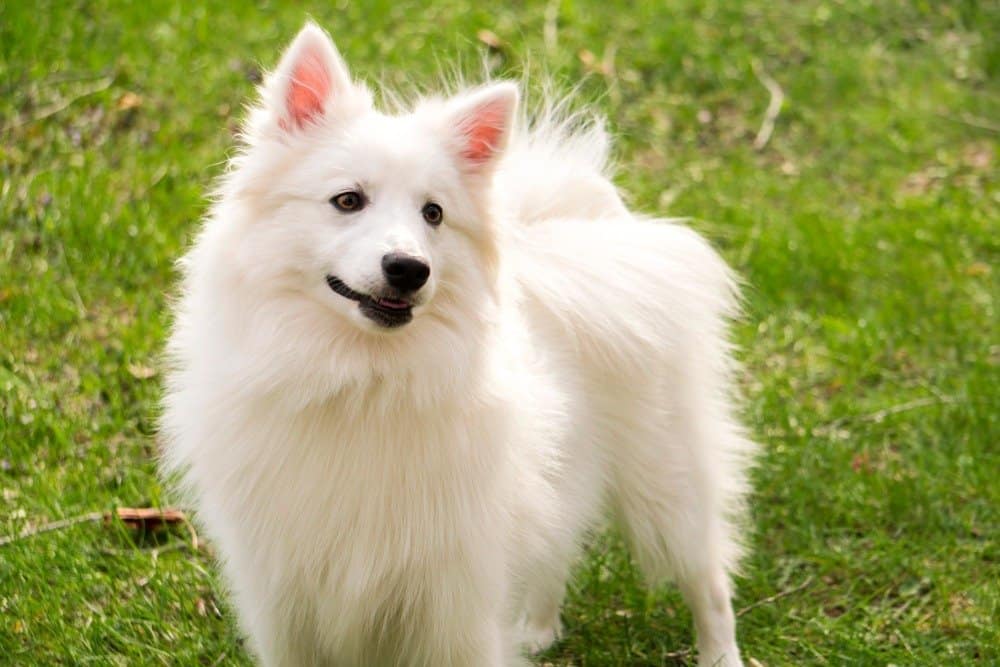
Eskimo dogs are renowned for their fluffy white coats, their friendliness, and their agility
©KA_Richer5171321/Shutterstock.com
In spite of their names, Eskimo dogs are actually an all-American breed with German roots. During the early 1800s, German immigrants in search of a new life came to the Midwest. With them was the German spitz, a friendly, affectionate, and clever canine wrapped in fluffy white fur.
Towards the end of the 19th century, they had become pretty popular and their intelligence and agility saw them employed in circuses.
However, the Second World Wars saw anti-German sentiment reach all-time highs and the name German spitz was promptly changed to Eskimo dog, inspired by a pet center in Ohio.
Health and Entertainment for your Eskimo Dog
See all of our expert product reviews.
Appearance
There are three different sizes of this breed of dog: toy, miniature, and standard. Toys are the smallest, weighing just 6 to 10 pounds and standing just 9 to 12 inches tall. Miniatures weigh between 10 and 20 pounds and are 12 to 15 inches tall. Standards weigh between 25 and 35 pounds and are 15 to 19 inches tall.
| Height | Weight | |
| Toy | 9-12 inches | 6-10 lbs |
| Miniature | 12-15 inches | 10-20 lbs |
| Standard | 15-19 inches | 25-35 lbs |
Common Health Issues
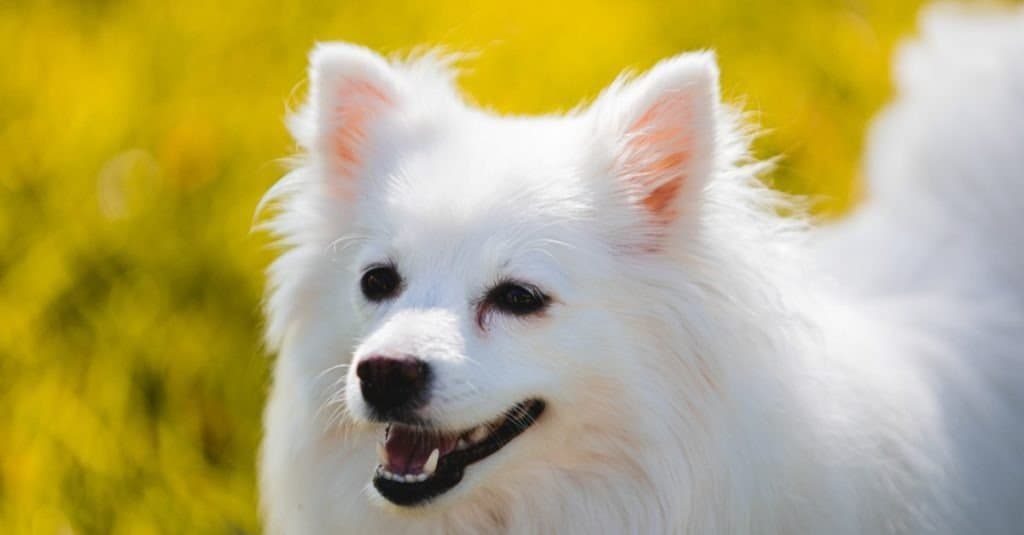
Eskimo dogs may be affected by Legg-Calve Perthes syndrome
©Scarlett Images/Shutterstock.com
Unfortunately, this breed faces a number of potential health concerns. One of these potential problems is hip dysplasia. This is typically only a problem for the larger dogs in this breed as hip dysplasia primarily affects larger dogs. The ball and socket in a dog’s hip with hip dysplasia do not fit together properly. They rub against one another, which causes them to wear down over time. This can be uncomfortable or even painful for dogs.
Legg-Calve-Perthes disease is another ailment to look out for. In this joint condition, the femur does not receive enough blood, which can cause the dog to limp. Most often, this condition can be caught when an Eskimo dog is between 4 and 6 months old. Luckily, it can be corrected with surgery.
Eskimo dogs are also prone to eye problems. One problem your Eskimo dog may have is Progressive Retinal Atrophy (PRA). This is a degenerative eye disorder that, even when caught early, can cause a dog to go blind.
Some Eskimo dogs also develop juvenile cataracts. This is an eye condition that develops before the dog reaches the age of 6. Since juvenile cataracts can be hereditary, you should check with your breeder to make sure the puppies are certified by the Canine Eye Registration Foundation.
To review, here are some of the major health concerns that Eskimo Dogs may face:
- Hip dysplasia
- Legg-Calve-Perthes disease
- Progressive retinal atrophy
- Juvenile cataracts
Temperament
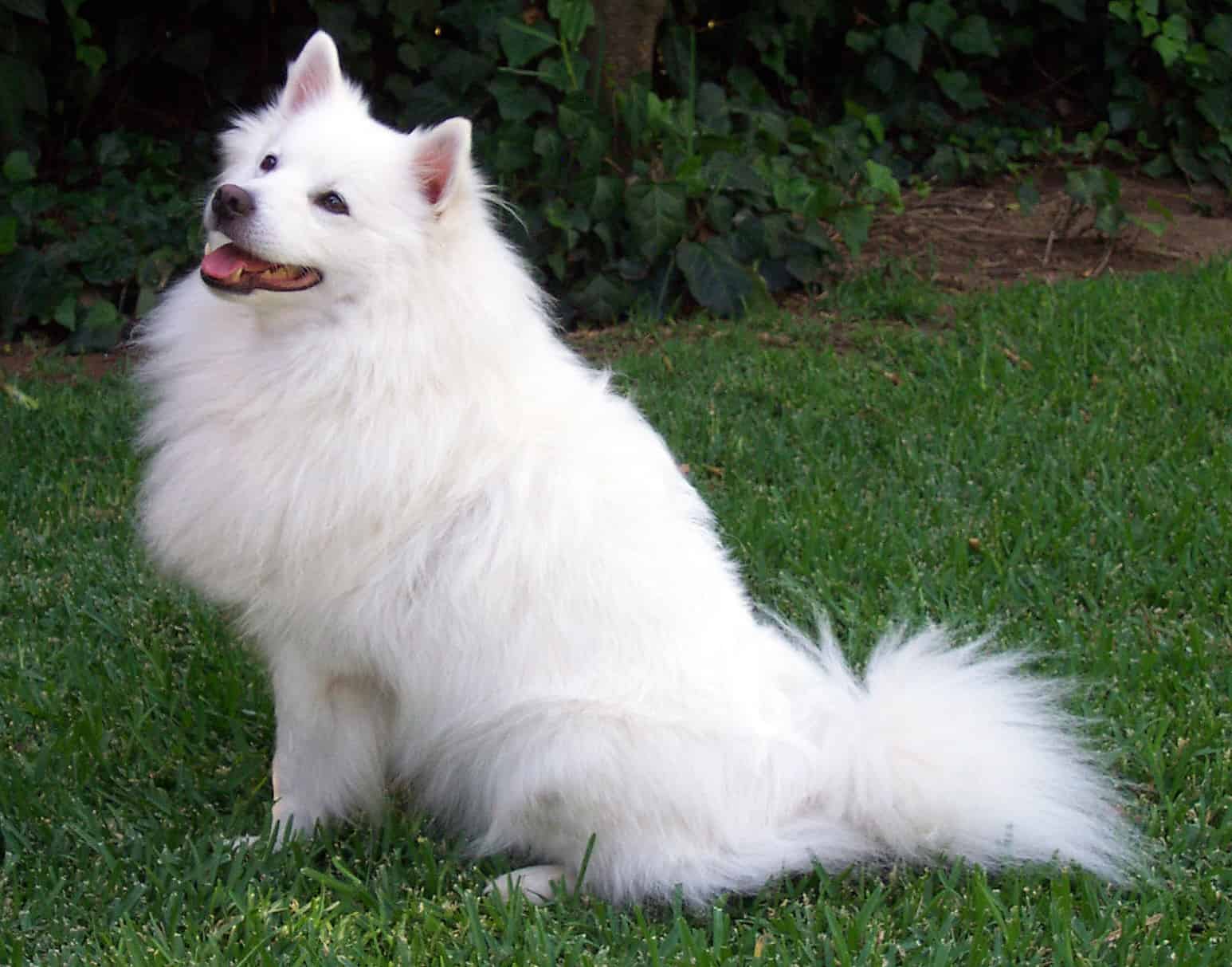
American Eskimo Dogs are intelligent, curious, and make superb family pets
©Isfand92/Shutterstock.com
The American Eskimo dog makes an excellent family dog because of its personality. These dogs can be very affectionate and loving towards their family members, including young children. They can be a wonderful companion and friend to everyone in the family. Another trait of Eskimo dogs is their intelligence. This makes them easy to train.
Eskies are also very curious. If they are not provided enough stimulation, it can lead to behavioral problems. So, you’ll want to make sure that your dog gets plenty of both physical and mental exercise and stimulation.
How to Take Care of an Eskimo Dog
This breed will require a different care plan than other breeds. As a member of the Nordic Spitz family, Eskimo dogs have their own special needs and concerns. When preparing to care for your Eskimo dog, be sure to keep their health concerns, temperament, nutritional needs, and other relevant information in mind.
The Best Dog Food for Eskimo Dogs
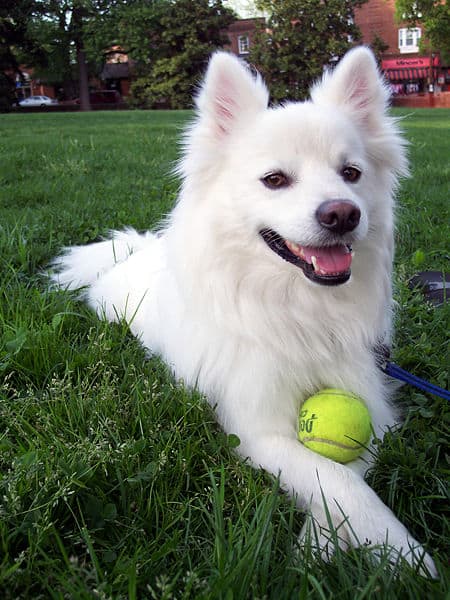
American Eskimo Dogs may benefit from puzzle feeders to prevent them from tucking away too much too quickly
©Ben Lunsford, CC BY-SA 3.0, via Wikimedia Commons – Original / License
When selecting a food for your dog, it is important to choose one with high-quality ingredients. Look for foods that are made using whole meats, not by-products, fruits, vegetables, and healthy grains. You can also consider making your own food. Either way, consulting with your veterinarian can help ensure that you choose food that meets their nutritional needs.
Since some dogs can gain too much weight and suffer from obesity, it is also important to make sure you do not overfeed your dog. Puzzle feeders that slow down how quickly an eskie can eat their meal can work to help make sure your dog doesn’t get too much food too quickly.
The quantity of food your dog will need will vary depending on whether you have a toy, miniature, or standard Eskimo dog. In general, Eskimo dogs need between 1.5 and 3 cups of food each day. In addition to their size, your dog’s age, activity level, and overall health will impact how much food they need each day.
Puppies should be fed high-quality puppy food. Most puppies will need between 1 and 2 cups of food, but you should check with your veterinarian to determine the specific nutritional needs of your pup.
Since Eskimo dogs can develop hip dysplasia as well as retinal atrophy and cataracts, proper nutrition is necessary to make support this breed’s joint and eye health.
A-Z Animals thinks Hill’s Science Diet Dry Dog Food, Adult 7+ for Senior Dogs, Chicken Meal, Barley & Brown Rice Recipe is something Eskimo Dog owners should consider.
Though it’s intended for senior dogs aged seven years plus, the taurine and vitamin A could make a big difference for your Eskimo dog’s eyes. Also, there’s calcium for bones, joints, and cartilage, with minerals that make for capable internal organs.
Check Chewy or Amazon for this product.
Maintenance and Grooming
These dogs are a relatively high-maintenance dog. You will need to brush their coat between two and three times each week to remove loose and dead fur and prevent it from getting matted. You won’t want to bathe your American Eskimo dog more than once every few months, since giving them a bath may cause their skin to become irritated.
In addition to regular brushing, you will also want to keep your dog’s nails trimmed, clean their ears, and brush their teeth.
Training
Eskies were once popular for performing in circuses and other dog acts. This breed is very easy to train. Their high intelligence and desire to please their owners will make it easy for you to teach them new commands and expectations. It will still be important to begin training your Eskimo dog from a young age. Socialization with other dogs and people from an early age is also recommended since it will help your eskie learn how to interact with other people and animals.
Exercise
Eskimo dogs are a high-energy breed, so they require a lot of exercise. Additionally, they are inquisitive, so you’ll also want to be sure to keep your dog mentally stimulated. Without proper exercise and mental stimulation, American Eskimo dogs may get bored and destructive. Taking your dog for walks and giving them some playtime in the yard are good ways to help your Eskimo dog get the exercise and stimulation he needs.
Puppies
Eskimo dogs typically have about five puppies in a litter. The dogs will display puppy-like behaviors until they are about two years old. Before purchasing a puppy from a breeder, you will want to have the dog checked out by a veterinarian to make sure there are no health concerns you should be aware of. You can also request copies of the paperwork about the parents and grandparents of the puppy from the breeder. This can alert you to any potential hereditary diseases you should be on the lookout for.
You will want to make sure your home is ready for a puppy before bringing home your eskie. Remember, these are very playful dogs, so make sure you have plenty of toys available for your new dog. You will also want to make sure that any potentially dangerous items or chemicals are safely put away where your dog won’t be able to get into them.

©Stockphoto5/Shutterstock.com
Children
Eskies are a great dog breed to have around children. They are friendly, affectionate, and playful, making them a great companion for a child. It is important to note that you won’t want to leave an Eskimo dog, or any other dog breed, unsupervised with a child. Children should also be taught how to appropriately pet and interact with an Eskimo dog to prevent any accidental injuries to either your dog or your child.
Dogs Similar to Eskimo Dogs
Siberian huskies, Bichon Frises, and Finnish spitzes are three breeds that are similar to the Eskimo dog.
- Siberian husky: Many people confuse Eskimo dogs and Siberian huskies. However, these are two very distinct dog breeds. A Siberian Husky is a much larger dog breed. Even the Standard Size Eskimo Dogs (the largest of the three sizes) weigh only 18 to 35 pounds. Siberian Huskies weigh between 45 and 60 pounds. Another difference between the two breeds is their coloring. Eskimo Dogs are white in color, while Siberian Huskies typically have a mix of colors including grays, reds, and blacks. There are a few similarities between the two breeds, though. They are both affectionate and playful dogs who are relatively easy to train.
- Bichon Frise: At first glance, you could easily confuse a Bichon Frise with a toy or miniature Eskimo Dog. Both of these breeds are fluffy, white dogs. They also both require a fair amount of grooming. However, Bichon Frises don’t shed much, while Eskimo dogs can be heavy shedders. Both breeds are also very affectionate and have average intelligence.
- Finnish spitzes: Finnish spitzes also share some similarities with eskies. Both breeds are easy to train, playful, affectionate, and social dogs. They both are vocal as well and may bark a fair amount. The coat of a Finnish Spitz is different from that of an Eskimo dog, though. While Eskimo dogs have a fluffy white coat, Finnish spitzes have a thick reddish-gold coat.
Famous Eskimo Dogs
Eskimo dogs are easy to train. In the early 1900s, they were often featured in circus acts. One of these famous dogs was Stout’s Pal Pierre. Pierre walked the tightrope during the Barnum & Bailey Circus.
Popular Names for Eskimo Dog
Looking for the perfect name for your Eskie? Check out some of the most popular names for this dog breed below:
- Prince
- Toby
- Ghost
- Trouper
- Barnum
- Luna
- Duchess
- Angel
- Marshmallow
- Bella
Eskimo Dog FAQs (Frequently Asked Questions)
How much does an Eskimo dog cost to own?
If you’re looking to purchase an eskie from a breeder, you should be prepared to spend between $1,000 and $3,000. However, if you adopt from a shelter or a rescue organization, it is likely that you’ll only pay around $300 in adoption fees.
Before making the commitment to adopt an American Eskimo dog, be sure to think about all the other costs you’ll need to pay for when taking care of a dog. These can include food, veterinary bills, leashes, collars, crates, dog beds, and other supplies. The first year your own your Eskimo dog, you should be prepared to spend at least $1,000. Each year after that, your expenses will likely be around $500, but could be more if you run into unexpected vet bills.
Is an Eskimo dog good with kids?
Yes, Eskimo dogs are great with kids. They are not aggressive, but rather are very friendly and affectionate. However, American Eskimo dogs can get separation anxiety because they bond so closely with their owners. So, you shouldn’t consider this breed if you won’t be able to be home with them most of the time.
Are American Eskimo dogs aggressive?
No, Eskimo dogs are not aggressive. They are very loving and affectionate. However, they can be a nuisance barker, so you may notice that your dog barks quite frequently.
How big are American Eskimo dogs?
There are three different sizes of American Eskimo dogs. The three sizes are toy, miniature, and standard. Toy Eskimo dogs are between 9 and 12 inches tall and weigh between 6 and 10 pounds. Miniature eskies are between 12 and 15 inches tall and weigh between 10 and 20 pounds. Standard Eskimo dogs are 15 to 19 inches tall and weigh between 25 and 35 pounds.
How many puppies do American Eskimo dogs have?
On average, females give birth to a litter of about five puppies.
Do American Eskimo dogs make good pets?
Eskimo dogs can make a great pet. They are loving, friendly, and relatively easy to train. However, it is important to note that this breed requires extra attention and maintenance when compared to other dog breeds. So, if you have a very busy schedule or are away from your home often, it may not be the right breed for you.
How long do Eskimo dogs live?
The average lifespan of an Eskimo dog is between 13 and 15 years.
Are Eskimo Dogs herbivores, carnivores, or omnivores?
Eskimo Dogs are Omnivores, meaning they eat both plants and other animals.
What Kingdom do Eskimo Dogs belong to?
Eskimo Dogs belong to the Kingdom Animalia.
What class do Eskimo Dogs belong to?
Eskimo Dogs belong to the class Mammalia.
What phylum to Eskimo Dogs belong to?
Eskimo Dogs belong to the phylum Chordata.
What family do Eskimo Dogs belong to?
Eskimo Dogs belong to the family Canidae.
What order do Eskimo Dogs belong to?
Eskimo Dogs belong to the order Carnivora.
What type of covering do Eskimo Dogs have?
Eskimo Dogs are covered in Hair.
What genus do Eskimo Dogs belong to?
Eskimo Dogs belong to the genus Canis.
What is an interesting fact about Eskimo Dogs?
Eskimo Dogs take pure delight in cold weather!
What is the scientific name for the Eskimo Dog?
The scientific name for the Eskimo Dog is Canis Lupus.
Thank you for reading! Have some feedback for us? Contact the AZ Animals editorial team.






